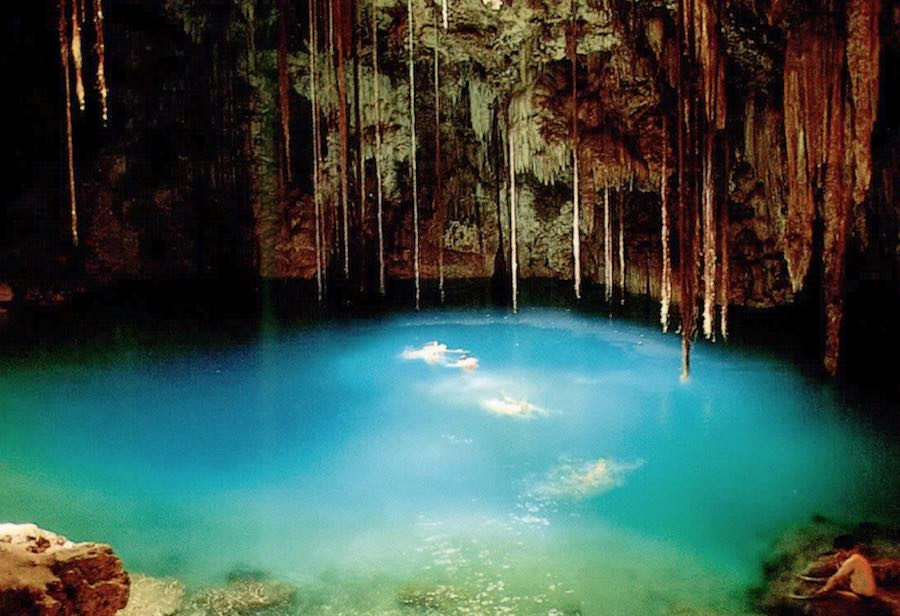JohnnyC and DocNet think this is a simple, open and shut, case of "disobeying the rules" of cave diving. In a sense, it is. But this doesn't get us anywhere in understanding the factors that fed into the decision to error (human error in DeJoy's model). It also does nothing to change the dynamic that led to this fatality. This is where further analysis helps. While I'm not going to further offend these two fellows, I will be referring to this model in more detail.
First, let me comment on both JohnnyC and DocNet's orientation; it is a simple-minded almost blind devotion to cave diving's "rules," and any deviation of those rules are seen with both anger and some ego. Yesterday, I was working with a local high school in the
AVID program, where I tutor these students. I found out that one was taking a basic scuba class, and he started telling me that he could not stand one of the three instructors the LDS was using; this guy was younger, and very rigid in his approach. When this student went to wash off his gear, the instructor insisted that he follow a strict protocol. He deviated from that protocol by not taking his snorkel off his mask while washing them. He got a three-minute lecture about "following rules." It completely turned off this student, who realized that this made no difference when it came to washing the snorkel and mask. His relating of this experience reminded me of how JohnnyC is reacting to me even talking about this current accident.
Now, let's talk about "Person-machine Communication," as one of the areas to explore in DeJoy's model. In this case, it is the use of scuba in these cenote's; these are almost certainly rented scuba. The regulator is unfamiliar, and the routing of hoses is unfamiliar. So to is the gauge/computer that is being used, and the BC. Simply getting used to the rented gear takes attention from the dive. Also under this communication realm, we have the potential for problems with language, both on the gauges being used (perhaps in metric units, for example), and the machine language from the computer about low air signals.
Now, there are four areas inthe "Environment" box, and I'll address each as it could relate to this accident.
"Anthropometry/biomechanics," has to do with the fitting of the gear, and the greater environmental aspects of coping with the subaquatic terrain. Rented gear is notorious for not fitting correctly, especially on the first try. This can make for uncomfortable diving.
Add to that the problems of entry from ten feet over the water, throwing fins in before jumping into the water (as seen is the entry video), gathering around a single ladder, there will be more anxiety because of the "ambient physical environment." Simply being in the water with an overhead, bats flying around (noted in the video), probably a slight current (cenotes are openings in underground rivers, according to several posters here, and could also explain where the diver ended up in the cave), and the change at the halocline in visibility, and you have further stressors.
Now, the "micro-task" and "macro-task" environment also plays into this scenario. Rented equipment means trying to figure out your gear while on the dive. This takes attention, and that attention is taken away from the dive guide. It could also explain how a person, preoccupied with his or her gear, could get separated from the group.
Finally, we get to the critical "Decision-Making" area. This includes "Pre-disposing Factors," "Enabling Factors," and "Reinforcing Factors." According to DocNet and JohnnyC, the reinforcing factor of earlier training should actually preclude this type of dive. But there are literally thousands of people doing these dives, which are occurring daily. We have counter-advertising on YouTube and at several dive shop's websites stating, "No special qualifications are required for cavern diving." These are "enabling factors," which over-ride the previous training because, first they are more recent, and second they come from people in authority for diving (instructors of the dive shops). "Reinforcing factors" comes from the divers themselves, who probably pass along information saying it is easy to do these dives, and very enjoyable. These over-ride the previous training on not entering overheads.
I'll talk more about interventions in a different post, but I want you to read this first.
SeaRat




